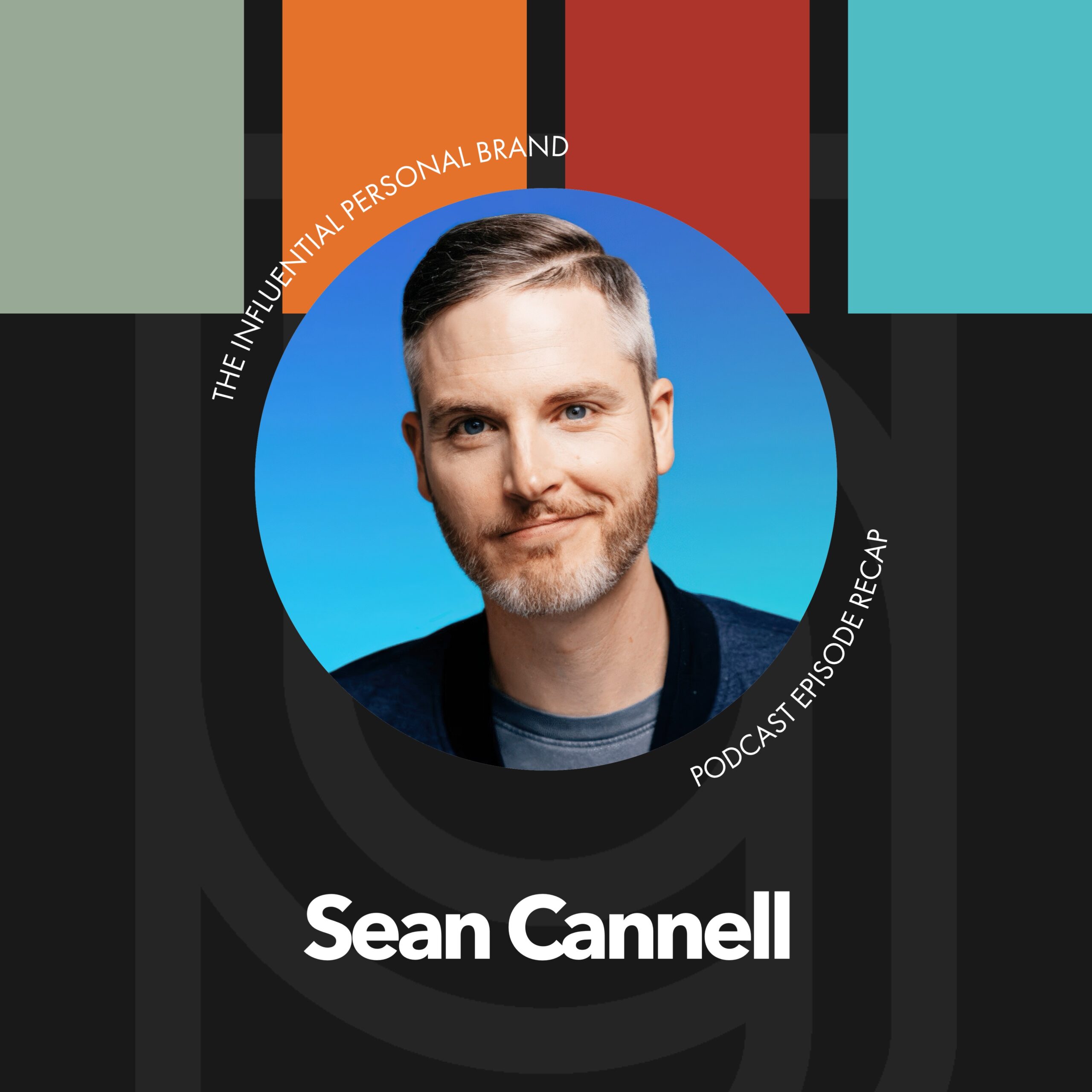RV (00:02):
What a fascinating, uh, story and recount of the Chicken Soup for the Soul brand. I loved it. Uh, this is a recap, uh, a little bit of that, that interview I did with Patty Aubrey and just, uh, if you didn’t get a chance to hear it, it’s about how they built the Chicken Soup for the Soul brand and, you know, sold all those books and changed the whole world and changed the whole industry. And it’s just a little bit of a, a, you know, just fun to go behind the scenes and, and see how that all worked out. And so I thought for today’s episode, I would stay in the theme of book launching and book selling. And I’m gonna walk you through five of the reasons why I think, uh, the five of the most common reasons why authors miss bestseller lists. Um, obviously Chicken Soup for the Soul came out years ago, and so it was fun to see how they bundled things and packaged them together to, you know, sell so many books.
RV (00:59):
In recent years, this has been a huge part of what we do at Brand Builders Group. We, we’ve helped 14 different authors become New York Times or Wall Street Journal bestsellers at this point, um, including myself, of course, which we’ve done. And it is something that we just, we know a lot about. And we are working with all of the biggest publishers in the world, pretty much, and many of the biggest authors in the world. And, you know, so many of our clients at Brand Builders Group are authors at some point are aspiring authors. And so we, uh, you know, we don’t just do book launches, but that’s one of the things that we do really, really well. And we’ve had a, a really strong track record of success, especially here consistently in the last couple years. So, um, I wanna talk about the five biggest risks that, uh, we see for why authors don’t hit bestseller lists.
RV (01:51):
And number one is volume risk, volume risk. So by far, the number one reason why most authors don’t hit the major bestseller lists is simply because of sheer volume. You know, the way that these lists work, uh, you know, the two major ones, New York Times and Wall Street Journal, we do follow others. We follow U s A today, we follow Amazon, we follow, um, you know, the Washington Post, we follow Publishers Weekly. There, there’s, there’s several other lists, but the two main ones, New York Times and Wall Street Journal are, are the biggest and the most credible, and people just have no idea how much volume it takes. Now these lists, most of them are weekly. The New York Times does have a, a monthly bestseller list, um, that is a business bestseller list, which actually, there’s, there’s more than just business books that qualify for that list.
RV (02:42):
We see, uh, psychology books appear on there, and self-help books also appear on there. But the main, uh, list that most of our clients at Brand Builders Group, uh, are going for in that we’ve, we’ve hit is the New York Times Advice Weekly, how to List, which is arguably the toughest list there is. It’s, it’s a very, very competitive list. And then, um, in the Wall Street Journal, the Wall Street Journal has a, a nonfiction list that many of our clients hit. And it’s all formats, paperback, you know, uh, and, and a hardcover, but, and all different nonfiction, um, BSAC codes. And then there is the, the Wall Street Journal business list. And, um, all three of those are the kind of the main three lists that we track and that we’re helping clients hit. ’cause that’s mostly what we do, right? Is, is non-fiction, business, self-help, health psychology, et cetera.
RV (03:33):
And, um, so you have to, in order to hit these bestseller lists, I mean, there’s a lot of things that have to happen, right? Part of which I’ll talk about here in this, in this, this episode. But the first, the first thing is you have to have a volume of units. And, and you have to understand that not every sale counts, only sales at certain outlets count. They’re called reporting outlets or reporting retailers. And so that’s one of the things that we do. And we advise our clients on their strategy. One of the things that we talk about is making sure their sales count. Um, and that’s something that we often help authors with as in addition to helping them create the strategy for how to sell a lot of books. Um, we also have a lot of strategies around making sure the sales count.
RV (04:15):
Because if you sell books at the back of the room, like, let’s say you’re a speaker and you sell at the back of the room, those books don’t count. Um, for the bestseller list, they have to be sold through reporting retailers. And, um, that’s a whole puzzle in game in and of itself. But, um, the way that these bestseller list work is they’re weekly lists. And so they are the number of units sold through all, you know, reporting retailers within a certain period in a window. And usually that is one week. And, um, in this case, these three, they are in one week. And, you know, just, we have a data science team that tracks this specifically. And once someone becomes a client, we actually share a lot of this data with them. The actual specifics, I’ll give you some broad numbers here though, but you know, roughly to make a run at a New York Times, uh, bestseller, you roughly need to have around 15,000 units in a week.
RV (05:07):
Um, we have had clients that we’ve been able to hit with less, um, but we also know people who have missed with more than that. And so, again, part of it depends on how the sales happen and where the sales happen, which is just one of the things that we just try to speak into and, and that we do speak into. ’cause we’re really good at it, even though our main focus is just teaching authors how to ethically and honestly sell a lot of books. So you gotta get about like 15,000 units though just to hit, you know, the, to be a candidate, you know, to hit the New York Times. So that’s not easy. And then a Wall Street Journal nonfiction bestseller, you know, roughly speaking on most weeks and every week is different. And that’s something that we look at and track, um, is when’s the best time to publish, to hit bestseller list, et cetera, and who your publisher is.
RV (05:51):
There’s lots of things like that. Um, but there is around 10,000 units is usually what you’re gonna have to sell in a week to be a candidate for a Wall Street Journal nonfiction bestseller. And then for the Wall Street Journal business, um, that, that one fluctuates, you know, quite a bit. But we typically say 3000 units sold in a week. Um, and you know, that’s a lot of books to sell in a week. So, you know, you’ve gotta create a campaign and a strategy, but that’s the number one reason why authors don’t hit, is they just, they have volume risk. They don’t have enough volume pushing through and also in the right locations. Like they don’t, they don’t know who the proper reporting retailers are, and they don’t have a strategy there, and they don’t even know that. They don’t know that that matters. And so, um, I mean, I, I see sales, I see books every week.
RV (06:37):
I mean, I just looked up one yesterday, a book that sold 4,000 units in a week should have hit a bestseller list. And it didn’t, it missed, and clearly they didn’t have someone advising them on, you know, the, the full picture of how to run these launches. But so volume risk is number one. Um, and it’s heart, it’s heartbreaking when people get the volume and miss, and the reason they often miss is ’cause of number two, which is what I call technicality risk. Um, so the technicality risk is just being unaware that there are so many technicalities that go into hitting these bestseller lists. Part of how I learned this is that one of the most heartbreaking moments of my professional career, um, was when my, my second book Procrastinate On Purpose came out. Um, and I, uh, we, we sold several thousand units. We should have been, and we expected to be a number one Wall Street Journal bestseller, which we were with, uh, take The Stairs, my first book.
RV (07:35):
And I sort of fully expected to do that. And I, we sold the units and then the bestseller list come out. And not only did we not hit number one, we weren’t on the list at all. And that is part of what sent me down a journey of discovery because it was gut-wrenching and, and, and heartbreaking. Um, not because you need the title to feel important, but because you pour your heart and soul into something for years, you know, making a book and preparing and doing the launch. And, and, you know, we know a lot about launching books, um, and, uh, this was at our former company, but, uh, so we weren’t in the business of, of teaching people how to do this, but it was, you know, it was frustrating and discouraging and it felt political, right? I, I felt like I, I got hosed or somebody was against me or out to get me because I sold more books than the books on the list that week.
RV (08:26):
And yet we didn’t, we didn’t hit the list. And that’s because of something called technicality risk. There are many different technicalities that have to be accounted for. And one of ’em, as an example is something called your BIAC code, B I S A C. Um, and so BIAC code is something that most authors don’t even know about or don’t even think to look at. Now, BSAC Codes stands for book industry Standards and Communications. Um, and what it is, is it is like the way that, that the industry organizes and categorizes books, right? There’s so many books, thousands of books, you know, every probably every month or maybe even every week that are coming out. And so these books get organized by category. And the industry categorization method is called the BSAC Code. And the BSAC code is the official category that your book is in.
RV (09:15):
Well, for example, when it came to the Wall Street Journal bestseller list, what was so painful was that, um, my second book was not properly categorized, and it was categorized as a self-help book. And really it’s a business book. Well, why did that matter? It because self-help books never show up on the Wall Street Journal business bestseller list, regardless of how many units they sell. So I did all of this work, our team did all of this work. We pour our heart and soul into it. Our clients are rallying to support us. You know, we’re, we’re, we’re launching this book out into the world. We execute everything and we miss the list on a technicality.
RV (09:55):
It was heartbreaking, right? Um, and, you know, that book never took off. Like my first book, take The Stairs took off, and my first book continues to sell really, really well. Now, it, it, uh, procrastinating on Purpose. My second book, it sold fine. I’ve earned out my advance, I get royalty checks. Um, we sell, you know, a a hundred plus copies every week still, but it never took off, like take the stairs. And part of it I think was ’cause we just, we lost a lot of that momentum of the bestseller and all the buzz, and it was because of an avoidable technicality. And yet no one brought it up to me. No one ever mentioned my literary agent, my publisher, my editor, our, you, you know, our marketing team, like our PR team. No one brought it up. I don’t know that they knew to bring it up.
RV (10:40):
I didn’t know to bring it up. And so that’s a part of where I started exploring this. And then ultimately when we exited that business, it started Brand Builders Group. One of the services that we started providing was book launch, you know, consulting and coaching and teaching people how to not only sell the books, but how to make sure their book sales count for the list. And that you don’t lose out to technicality risk. That’s only one type of risk. There’s other types of technicalities, geographic, there’s publisher risk. Did you know that certain publishers are more likely to show up on the New York Times than other publishers? Um, there are all these things that we track that are just technicalities and you just don’t even know as an author, and no one even brings it up. And you’re so focused on just trying to sell books, which no one has a really good plan for, unless, unless you’re working with us. Then it’s, it’s just like, man, it, it, it’s, it’s, it’s really tricky. So you gotta watch out for technicality risk and you need to talk to somebody who knows what they’re doing and who understands and looks at these bestseller lists. And that’s, you know, part of what we built at Brand Builders Group is a data science team that does nothing but track data just to understand how the bestseller list work. Um, number three is kind of closely related, we call it over estim Overestimation risk.
RV (11:52):
Overestimation risk. And this is definitely one of the reasons why authors miss the bestseller list, which is that they overestimate the importance of PR and social media. Uh, now you might say like, how could you overestimate the importance of PR and social media? Well, PR and social media are good things. You, you need to do them, you should do them for your book launch. But for most authors, that’s what they think. That’s what they think is going to make them make or break hitting the list. And what we know in reality is that only 0.001%, that’s what our team estimates after running several of these launches of your social media falling will convert to become book buyers 0.001%, right? So if you’re Eric Thomas, et the hip hop preacher, we helped, um, Eric Thomas run his entire book, launch the Strategy from Beginning to end, um, and we hit the New York Times with et or he hit the New York Times, we got to be a part of it.
RV (12:51):
And you know, ets amazing. He’s a legend and he is got 5 million social media followers. Well, we estimate that around 5,000 of the book sales came from social media. Um, how do we know that? Because we track all the sales and where all the sales come from. So that’s, if you’re Eric Thomas, right? You might sell 5,000 units from that. So when we created bestseller launch plan, which is our formal curriculum at Brand Builders Group, where we teach people the five mechanisms for how to sell a lot of books, what we created that because we realized for ourselves that social media and PR doesn’t sell that many books. Even when you get on the major podcast, like the biggest podcasts in the world might move a few hundred copies, right? I mean, we’ve had, we’ve had clients and friends and I personally been on many of the biggest podcasts in the world.
RV (13:37):
You might move a couple hundred, 300, a huge, huge podcast would move like 500 units, even the Today Show or national television, right? We’ve had friends, uh, and clients get on the Today Show. We might see a thousand units from that one sale or from that one appearance, which is good. You still need to do it. That’s a thousand units, that’s a thousand lives you’re changing. But a thousand is nowhere near enough to hit any of the bestseller lists, let alone a New York Times, right? So you gotta have a whole other strategy going on here to to, to pull it off. I’ve been on national tv, um, multiple times and I’ve seen, I’ve seen my biggest national TV appearances might move a thousand units. I’ve had some national TV appearances where I can’t even tell, you know, any sort of a, you know, deline able difference in book sales from a national TV appearance, which is hard to get.
RV (14:27):
Um, so there’s this overestimation risk of PR and social media that’s not what move books. You need to figure out a better plan that’s gonna move them. And if you’re a B B G client, obviously we’re, you go through the bestseller launch plan curriculum, you have access to it. We teach you, we teach you the whole system. So watch out for that. Number four is inventory risk. Inventory risk. And this one is another devastating, heartbreaking, tragic thing that makes, gives me so much pain, which is that authors do all this work to create the sales. They have all the money, they have all the people out there buying the books, and the publishers haven’t printed enough inventory, or they have printed enough inventory, but it hasn’t been shipped in time to get to the retailers like Amazon and Barnes and Noble and Books Ilion and all the independent stores and whatever.
RV (15:16):
And so when your audience goes to buy the book, either it shows sold out and nobody can buy it. Or what’s even more frustrating is you can buy it. And so you’ll place an order and you’ll buy a book online and you will make the sale, they’ll collect your money, but because they don’t have the inventory, the retailers can’t ship the books out in time. And so the books get reported when they ship. And so even though the sale happened in a certain week, the reporting of that sale doesn’t happen till future subsequent weeks. And so you have an author’s launch where all, everything they poured into this, their, their reporting gets diluted across multiple weeks. And I’ve seen that happen multiple times. And it, and it typically happens with newer authors, younger authors, smaller publishing companies, and smaller print runs because they just, they don’t know how many books the the author’s gonna sell.
RV (16:14):
It’s their first time. They don’t, they can’t take a huge risk to print a whole bunch of copies. They don’t realize how important it is. And they underestimate how long it takes to print books and get ’em shipped, and then for the retailers to get ’em and checked into inventory and you could do everything else right? And then miss on this one, just again, sort of a horrible technicality of, of, of going, man, I, I created the sales. The sales are there, people spent the money. We, we, we had people buy that many units in a week, but they didn’t get reported because of the way that the inventory happens on the backend. And again, as an author, it’s like, how do you know this? Like, you don’t even know to know this. It, it’s taken me years to figure this out and to learn this stuff.
RV (16:56):
And, and obviously part of why we started Brand Builders Group and created the services that we have, one of which in, in this book Launch in Space. And that points to number five, which is the last one, which is Planning risk, planning risk. And this one is the one that’s controllable. And this is the, this is, you know, the biggest controllable issue that authors have, which is they wait way too long to plan for their launch. Most authors don’t plan for launching their book until their manuscript is done. And you might only have a few months before the book comes out. And that’s not enough time to fully plan and execute and orchestrate and pull off the, the, the logistical, uh, masterpiece that has to take place in order for a book to become a bestseller. I mean, most of these clients that we’re working with we’re, we’re, we’re helping them, we’re helping them years in advance because they’re b b G clients.
RV (17:52):
And so we’re helping them build their platform, build their speaking career, build their social media, build their podcasts, build their funnels, right? Build their sales team, build their events. We’re, we’re building all of this stuff up. And so they’re already in position that we can execute a launch quickly. But if you’re just rolling off the street as a new author and you don’t have a clue how to sell books, and you don’t have a team and you don’t have a huge audience and you can’t get on national tv, it’s like there’s no chance. I mean, the, the ship has sailed be before, you know, like that, that game is already over before it began. And it’s just ’cause you don’t know and you don’t realize that you have to plan. I mean, anything that takes excellence, takes planning. Like you have to plan way out in advance.
RV (18:32):
And so, you know, we tell even, uh, our ideal time is that we should be talking to an author about a year before their publication date of their book if they really wanna make a run at a bestseller. Now, there’s times where we have one regardless, right? Um, Tom and Lisa Bilyeu, uh, hired us 13 days before their book launch. And in 13 days we were able to grow their total sales over 30% in 13 days. And, um, Lisa hit the u ss a today bestseller list, kind of just barely. And so we played a really significant role in that, um, which was great, but you know, they also have a lot of things going for them that not every, you know, new person does that we could, you know, so we were able to move some things and make things happen quickly. Can’t always do that with, with up and comers.
RV (19:17):
So, um, you gotta start planning early and, you know, if you have a book or you wanna have a book coming out in, within the next year, I mean, request a call with us now, like, do not wait. I mean, and you can, you know, you can do that every week. If you go to free brand call.com/podcast. We mention this every week. You can request a free call with our team and you can start getting educated on this and learning about this. But don’t wait too long to plan otherwise, you’ll miss your window. So there’s a lot more going on here to becoming a bestselling author than just selling a lot of books. And those are the five biggest risks for why people miss the list. Hopefully, by knowing ’em, uh, you can help avoid, will help you avoid ’em. And if you’re not sure or exactly clear on exactly how to do that, then talk to us and let us be your partner in this process. Share this episode with an author that you know, or someone who’s an aspiring author or someone who has a book coming out. This is a must listen to must see episode. If someone is an author, this can be life-changing information. So I hope you’ll share that with somebody who is on that path. Thanks for being here. We’ll catch you next time. Bye-bye.


















